Flying to Antarctica
By Anne Klaosh
Two venerable Antarctica cruise operators continue to evolve with Lindblad Expeditions adding a fly-cruise option that makes for a shorter trip and Antartica21 opening a private club for its travelers in Punta Arenas, Chile, an Antarctica gateway.
Lindblad Expeditions, which pioneered Antarctica travel in 1966, added two shorter fly-cruise options on National Geographic Explorer starting in the 2024/25 season.
For those interested in flying to Antarctica, an eight-day itinerary flies round-trip across the Drake Passage and a 10-day itinerary crosses the Drake Passage by ship with an air return from King George Island.
To Fly Or Not To Fly?
I’ve done both — crossing the Drake Passage three times by ship and once by private jet from King George Island to Punta Arenas. The Drake has a well-deserved reputation for rocking and rolling, and for some people that is just too hard to stomach.
Cruising across the Drake Passage is not always terrible, though, and it can be considered a rite of passage that’s goes with the experience of visiting the most remote place on earth. I had one rough crossing, followed by a pretty smooth, easy return on the same trip and the third crossing not bad, either.
The passage usually takes two days each way so flying shaves off quite a bit of time, and for some people that alone may make an Antarctica adventure possible.
Better Or Worse Environmentally?
It’s a good question. I don’t know which is better or worse for the environment — a two-hour flight burning jet fuel versus two days of churning seas on a small ship burning low-sulfur fuel (a requirement for Antarctica), but I’m trying to find out. Double that if flying both ways or sailing both ways.
For much more detail on what a fly-cruise experience is like, see my report on Silver Endeavour from the 2022/23 Antarctica season.
LEARN MORE: Here’s Anne’s review of her Silver Endeavour Antarctica trip.
One caveat about flying: You’re subject to Antarctica’s fickle weather. On my trip last season, for example, our cruise was cut short by a day because bad weather was forecast at King George Island, where pilots have to be able to make a visual landing. So when we went for our evening expedition briefing, we were told that instead of one last day of Antarctic exploration, we’d be leaving the ship the next morning to get to the airport before the bad weather closed the airstrip.
Lindblad’s Two New Offerings
All that as background, here’s what Lindblad Expeditions is offering for travelers considering flying to Antarctica:
The eight-day “Antarctica Direct: Fly the Drake Passage” expeditions fly round-trip across the Drake Passage to the Chilean base of Presidente Frey on King George Island where passengers embark the 148-pax National Geographic Explorer. On day seven, the ship will return to King George Island where passengers disembark and fly to Puerto Natales, Chile, where they overnight before beginning their journey home the next day.
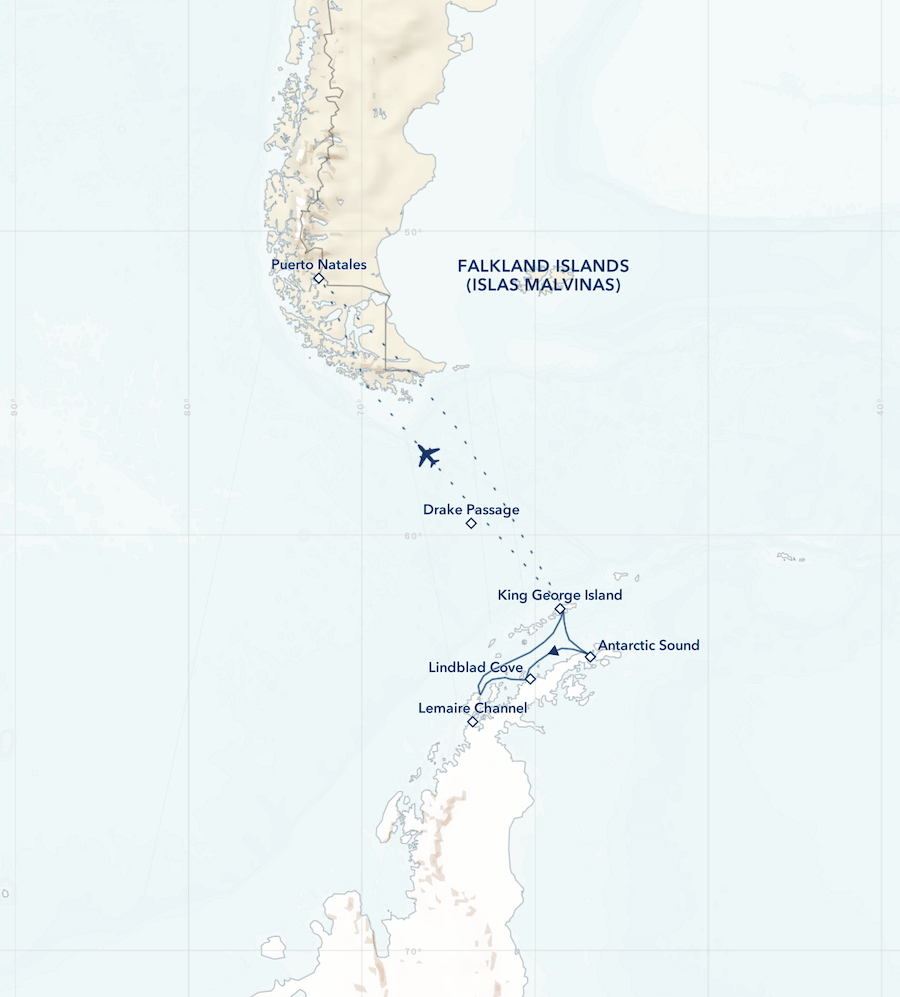
Flying to Antarctica shaves several days off the trip. * Map: Lindblad Expeditions
This new expedition launches with limited time inaugural pricing, including return-trip private air to King George Island.
Travelers who book before Jan. 31, 2024 receive a special $500 expedition credit per person.
For the 10-day “Antarctica Direct: Sail and Fly the Drake Passage,” passengers embark National Geographic Explorer in Ushuaia, Argentina, and spend two days crossing Drake Passage then five days in Antarctica before arriving to King George Island, where they board their chartered flight to begin their journey home. Limited time inaugural pricing, including outbound private air to King George Island, is available.
Travelers who book before Jan. 31, 2024 will receive a $1,000 expedition credit per person.
“While we’ve only just started accepting bookings … we’ve already seen a surge in demand for these accelerated expeditions,” said Noah Brodsky, chief commercial officer, Lindblad Expeditions. “As part of our pre-launch teaser campaign, we opened a wait-list for eager travelers, which had more than 1,000 time-crunched past guests and first-timers registered.”
The new options bring Lindblad’s 2024/25 Antarctica itineraries to seven, with nearly 50 departures.
Check out Lindblad’s flying to Antarctica options here.
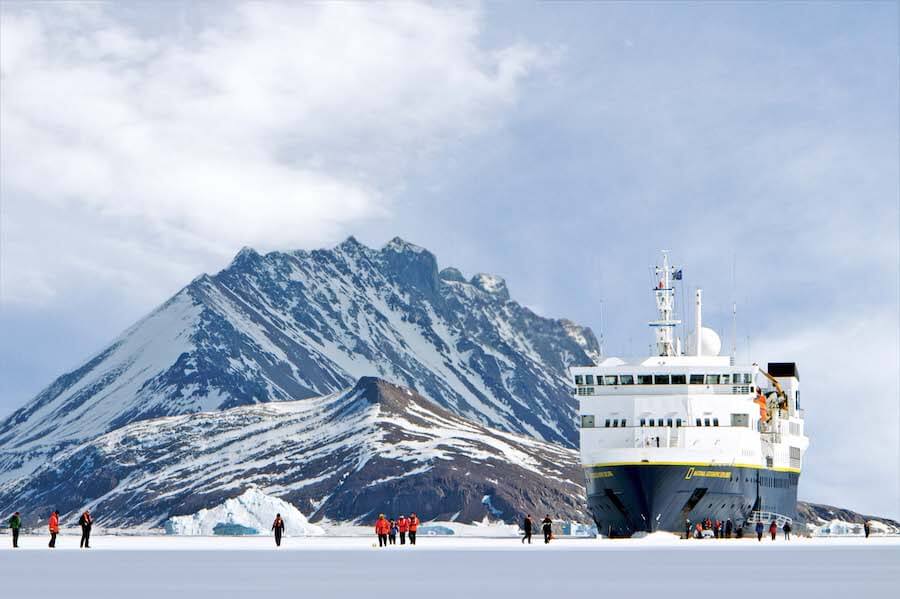
The recently refurbished National Geographic Explorer will operate the new fly-cruise expeditions. * Photo: ©Lindblad Expeditions
Antarctica21’s Private Explorers House
Antarctica21, which was the first company to offer fly-and-sail expeditions to the White Continent 20 years ago, opened its new Explorers House in the historic center of Punta Arenas, Chile.
This is a place for Antarctica21’s passengers preparing to fly, in order to skip the Drake Passage crossing, to join their ship in Antarctica.
With amenities that include a restaurant, bar, coffee station, library and presentation space, the Explorers House functions as an Antarctic-themed private club, providing a place to relax, meet fellow travelers and attend pre-departure briefings.

A restaurant serves regional Chilean cuisine. * Photo: Tere Pérez
During the austral summer, this port city on the Strait of Magellan gets very busy as adventurers on their way to Patagonia, Tierra del Fuego, Cape Horn and Antarctica fill hotels, restaurants and cafes.
Before Explorers House, Antarctica21 travelers competed for access to the city’s limited resources. Now, they have a private gathering space where they’re greeted by members of the Antarctica21 team and experience the same service standard they’ll receive aboard the company’s ships, 76-pax Magellan Explorer and 67-pax Ocean Nova.
Historic Former Wool Warehouse
Explorers House is a former warehouse that processed and exported wool in the early 20th century. Antarctica21 rescued the building in 2019, buying it for its historical significance. The renowned Chilean architect Pedro Kovacic and designer Enrique Concha led the conversion project, infusing it with the spirit of Patagonian pioneers and Antarctic explorers while incorporating contemporary elements.
“There is history behind Explorers House, experiences I lived my whole life,” said Jaime Vásquez, co-founder and president of Antarctica21, who is from a ranching family in Chile’s Magallanes region. “Now, the building has a new life, and its spirit is shared with visitors.”
Originally made almost entirely of wood, the 21,500-square-foot Explorers House is now covered in an insulated shell of corrugated iron to protect it from the elements. Inside, the frame of the original structure, reinforced with new metalwork, remains visible as an homage to the building’s history.
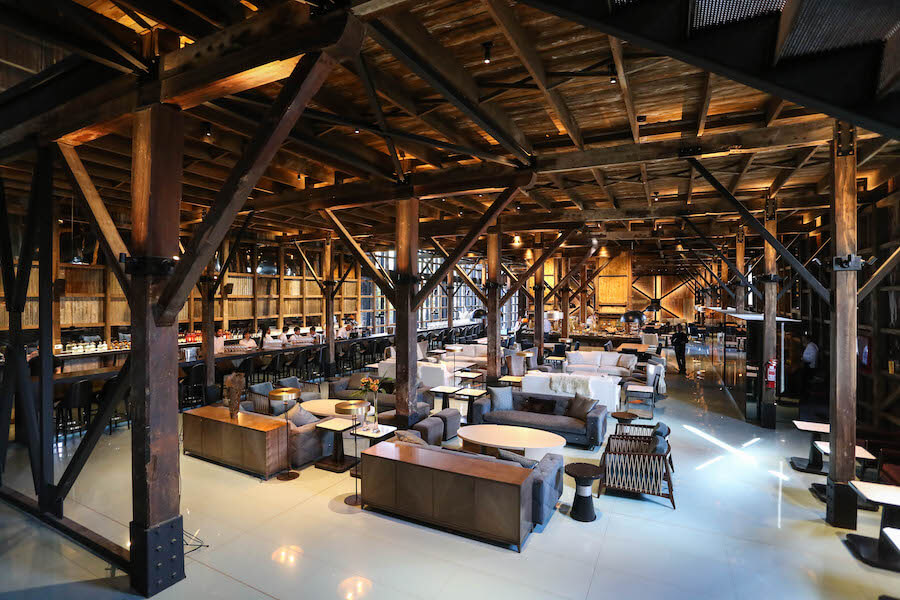
Explorers House in Punta Arenas is housed in a historic former wool warehouse. * Photo: Tere Pérez
Ample Amenities
The two-story building includes a reception area, restaurant with regional Chilean cuisine. well-stocked bar, coffee station, lounge space for 250 people, theater-style presentation space for 100 people, interactive touchscreens and live information screens, a library, gear and gift shop, garden, restrooms and parking.
Warm materials and textures invite relaxation, and turquoise-colored floors evoke Antarctica’s icebergs. A skylight along the peak of the roof and large windows let in natural light, and rich illumination provides accents.
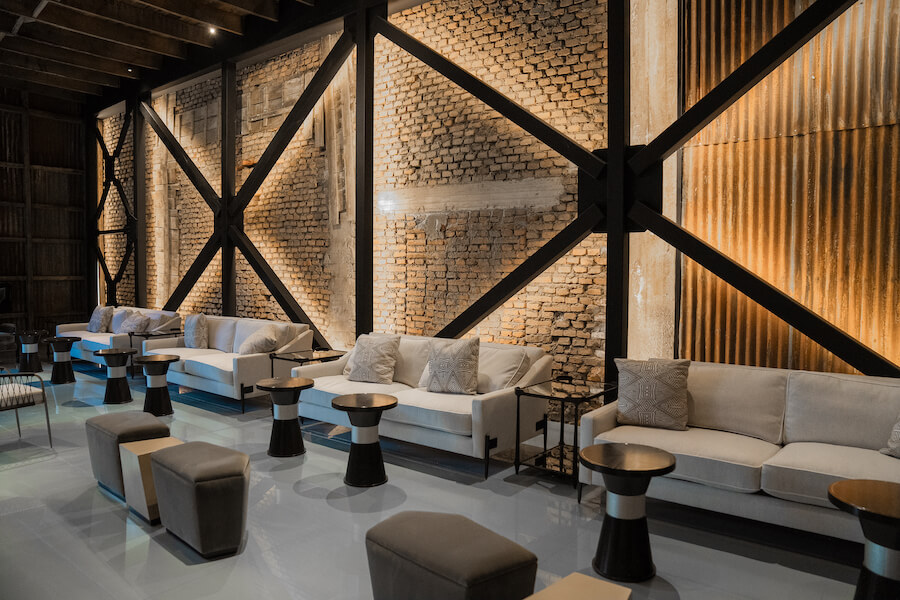
Cozy lounge seating in a spacious, two-story building. * Photo: Tere Pérez
Many of the building’s original materials were reused, much of the upholstery is made of recycled industrial fibers, a solar panel system produces electricity and heat through radiant floors, and rainwater is harvested for use in the restrooms.
Explorers House sounds like a very enticing addition that further differentiates Antarctica21 as more operators emulate the company’s fly-cruise concept.
LEARN MORE: Read more about Antarctica21’s Explorers House and flying to Antarctica.
![]()
Don’t miss a post about small-ship cruising, subscribe to QuirkyCruise.com for monthly updates & special offers!
© This article is protected by copyright, no part may be reproduced by any process without written permission from the author. All Rights Reserved. QuirkyCruise.com.

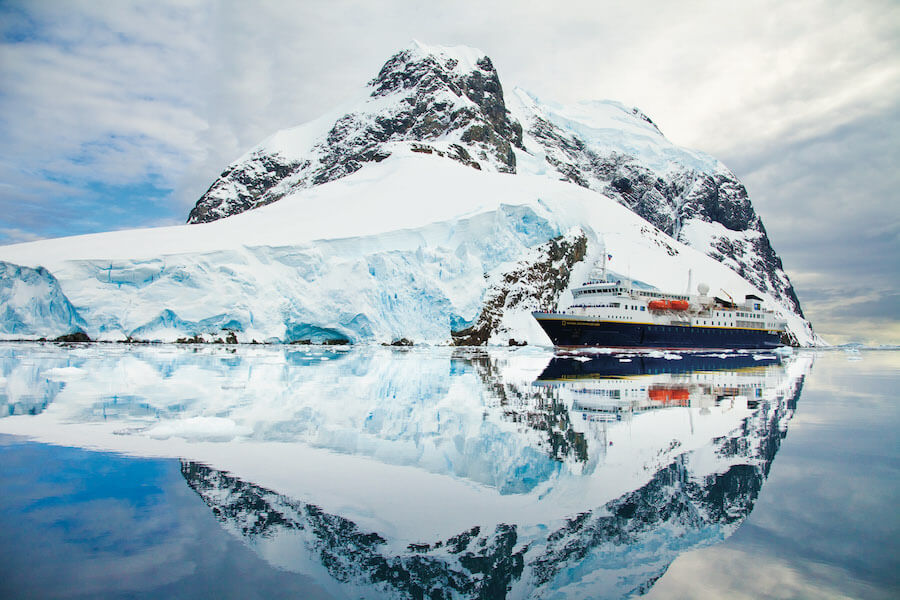


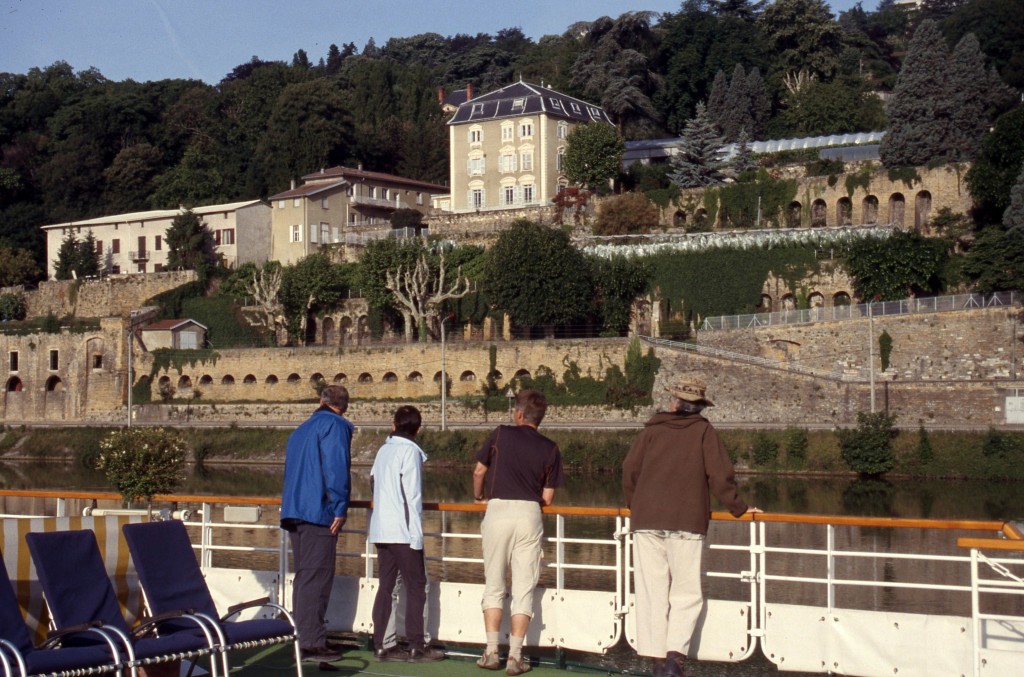









 HEIDI SARNA
HEIDI SARNA











